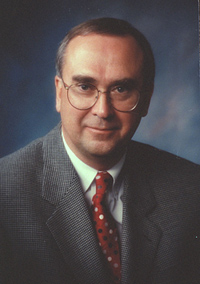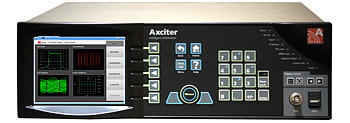Mobile TV Front and Center at NAB
LAS VEGAS
It may seem like a long time coming for a growing legion of proponents, but the NAB Show this month provides the last industry showcase for mobile DTV before the ATSC Candidate Standard is soon deployed in the real world in dozens of initial markets. In that regard alone, in a "real world" that has seen its share of recent negative news, the timing of something shiny and new couldn't be better.
On the eve of NAB, the Advanced Television Systems Committee is fine-tuning the ATSC Mobile DTV system in order to soon deliver its long-awaited formal sanction for the new industry standard. The spring timing of NAB gives the ATSC—as well as competing mobile TV manufacturers and the Open Mobile Video Coalition—an opportune chance to promote the attributes of mobile TV to stations with the promise that, compared to the hefty retooling requirements of the overall digital transition, delving into mobile TV streaming typically should not pose any additional capital outlays for a local station.
TUNING UP

Jay Adrick, Harris Corp. The OMVC, a coalition of networks and groups representing more than 800 commercial and public stations, sees NAB as a prime chance to finally sell the business possibilities of mobile broadcasting to a choir where some stations are already signed on and singing, others are humming without fully knowing the lyrics yet, and a lot are still listening. So far about 70 stations in more than two dozen markets (including DMA no. 1 New York City) have committed to ramping up mobile DTV very soon.
OMVC—whose booth will be adjacent to the ATSC Mobile DTV Pavilion (Booth C8546N)—will sponsor a one-hour Super Session on Monday, April 20, at 7:30 a.m. in Ballroom A of the Las Vegas Hilton. It's open to all attendees.
"In a sense, we're re-imagining the wireless experience for mobile TV users and that will create a broad new manufacturing opportunity," OMVC Executive Director Anne Schelle told TV Technology. "NAB will provide the first chance to demonstrate the full range of what's out there for the entire mobile DTV ecosystem."
ATSC itself is also going all-out in pushing mobile DTV at NAB, with Executive Director Mark Richer predicting it will be "the hot topic" at this year's show.
"NAB will be a good opportunity to see the status of commercial products that will support our new standard and a chance for attendees to get a better understanding of the new business opportunities." Richer said the ATSC Mobile DTV Pavilion will showcase wares from Axcera, DTV Innovations, ETRI, Expway, Harris Corp., LG Electronics, Linear Acoustic, Rohde & Schwarz, RRD USA, Sarnoff, Sencore, Sinclair, Triveni Digital and Zenith.
REAL PRODUCTS
Both at the ATSC pavilion and in individual company exhibits, a wide array of products will compete for answering stations' mobile DTV needs dealing with content, interactivity, encoding, metadata, multiplexing and emission solutions. Various terrestrial signals in Las Vegas will once again (as in past NAB and CES shows) provide various real-world demos of mobile streaming possibilities available to broadcasters. In its early days, most of the receivers of mobile DTV content will consist of cell phones and laptop computers with USB dongles.
Acrodyne and its competitors will be offering the full "value chain" of technical wares for stations, according to Andy Whiteside, vice president of engineering. For Acrodyne, this will entail AVC encoders, a program service metadata server, its OMA (Open Mobile Alliance) electronic service guide, various interactive applications, and a multiplexer (with IP encapsulation and exciter). Together, the entire package is Acrodyne's "Mobile360." The firm's OTA demo will operate using Sinclair's KVCW-TV signal in Las Vegas.
Jay Adrick, vice president for broadcast technology at Harris Broadcast, said NAB will provide the showcase for Harris' current mobile DTV kit, specifically its Apex M2X exciter and networking system (NetVX), featuring a mobile video encoder, multiplexer and encapsulator. Harris has ventured with Roundbox and Triveni Digital to integrate an electronic program guide into its mobile TV platform. Harris also will rely on Sinclair's local signals for its mobile demo for a third year.
"Everyone has seen the mobility angle, the delivery of audio-video in mobile environments [throughout Las Vegas], and now we're going beyond that with added features such as electronic service guides and other elements that will be part of a mobile TV service," Adrick said.
Harris has been working with local stations in anticipation of a full-fledged start-up, and some broadcasters could ramp up mobile services as early as May, Adrick said, prior to the ATSC's formal sanction of the candidate standard. "I think quite a few local broadcasters are poised to see what the early adopters are going to do," he said.

Axcera Axciter Rohde & Schwarz, for its part, also has a full menu of mobile wares awaiting the perusing eyes of NAB attendees, according to Sales & Marketing Director Eddy Vanderkerken.
"The transmitters and exciters we've been using in the last three years are already ATSC-M/H capable," he said. "Our exciter [R&S SX800] was designed with worldwide TV and mobile DTV standards in mind. Many broadcasters will not need to renew their transmitters, but just add new items such as encoders and a multiplexer." Vanderkerken said the R&S exciter can easily be retrofitted into existing transmission systems made by any manufacturer.
Rohde & Schwarz also has developed an ATSC Mobile DTV-specific emission multiplexer (R&S AEM100)—and both the SX800 and AEM100 include single-frequency network capabilities for distributed transmissions.
Axcera will be offering a live OTA demo of ATSC Mobile DTV NAB. According to Jack Wilson, the firm's marketing director, its digital modulator (Axciter) supports ATSC-fixed ATSC-M/H and distributed transmission and can be retrofitted to existing transmitters, regardless of manufacturer. Wilson said Axcera's NAB display will include its distributed transmission adaptor (DTxA) for enabling two or more transmitters to broadcast in overlapping coverage areas on the same channel. Axcera will be the only manufacturer to have commercially deployable DTS systems at NAB, according to Wilson.
Once NAB is over, OMVC's Schelle said broadcasters should have "a clear understanding that ATSC Mobile DTV is ready for deployment, and that the technology presents a lucrative opportunity to expand public services and increase broadcaster revenues."
Get the TV Tech Newsletter
The professional video industry's #1 source for news, trends and product and tech information. Sign up below.
